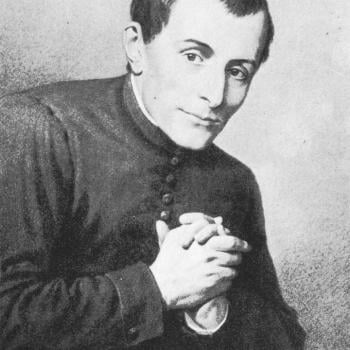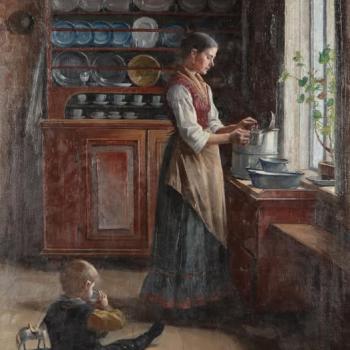![]()
Iconography is a Christian practice that is unfamiliar to many protestants, and often misunderstood. It involves the creation and use of religious images that depict Jesus, the saints, scenes from the Bible, and always points to something else of greater significance through literal or figurative meanings. Iconography comes from the Greek word εικoνογραφία which means “image writing.” An Icon(or “ikon” or “eikon”), although an image, is not painted but is written. They are not simply artistic expressions but rather can declare truth, in the same way we use words to declare truth.
In the same way we have to learn to decipher the meaning of letters so we can learn to decipher what an icon is saying. We just have to learn the language.
An icon is not to be worshiped. It is a window through which we can glimpse some things of God, and because of that they should be treated with respect. Traditional icons leave little room for creativity. Every aspect of an icon has a meaning. Creating an icon is about communicating a truth more then expressing yourself.
Symbology in Icons – to read an Icon there is another language you must be aware of. Every aspect of a face, element of wardrobe, and color has a meaning. Each icon brings with it a history, a story, and a way in which we as readers are supposed to approach it. I admit icons are something a bit unfamiliar to me as well. So please join me in exploring how to read icons.
Here is a chart to help, much of which I got from fisheaters
| Hands | hands are often shown giving a blessing: the last two fingers touching thumb (two fingers raised) symbolizes the two natures of Christ; ring finger touching thumb (three fingers raised) symbolizes the Trinity. Hands are also shown with with the forefinger extended straight; the middle finger curved slightly; the thumb and the ring finger crossed; and the little finger curved slightly. This gesture forms the letters “IC XC” (Greek letters for “Jesus Christ”) — the first finger making the I, the curved middle finger forming the C, the crossed ring finger and thumb forming the X, and the pinky finger forming the second C. |
| Eyes | large to show faith in God (“the eyes of faith”) |
| Ears | large to show we must listen to God |
| Position | usually, divine and saintly figures face forward; others are in profile |
| Light | Light source shown as coming from within the Divine or divinized Person or persons |
| Color | Gold: Divine Light, Christ Himself White: eternal Light, the Father Green: Holy Spirit, regeneration Blue: faith, humility, human life Red: youth, beauty, war, love, divine life Purple: royalty, priesthood Bright Yellow: Truth Pale Yellow: pride, betrayal Brown: death to the world Black: evil, death |
| Time and Space | earthly perspective is lost and icons have a flatness to them that disappears in Western Art after the painter Giotto discovered the rules of painting using perspective. Time, too, is distorted to show sequential events simultaneously. Both of these phenomena lend themselves to aiding the viewer in realizing that he is not looking at temporal realities, but spiritual realities |
| Evangelists | wear tunics, carry a book |
| Bishops | wear vestments, carry a book or scroll |
| Monks | wear habits, stand very erect |
Look at the icon of Jesus and Mary at the top of this post and the colors used in their garments: Jesus wears red undergarment with a blue outer garment (God become Human) and Mary wears a blue undergarment with a red overgarment (human was granted gifts by God)
I will be starting a new series called. “Better know an Icon.” This series will pop up ever now and again so look for the tag “icon”











